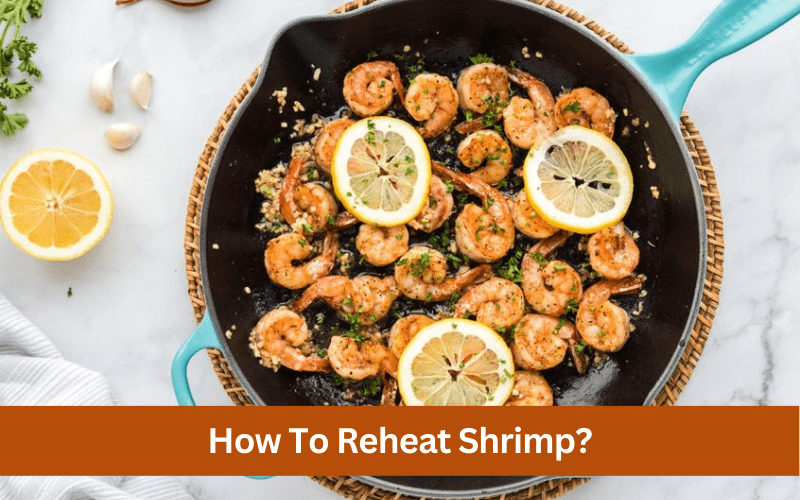If you’re like me, you love shrimp. It’s a delicious and healthy protein that’s versatile and easy to cook. But what happens when you have leftovers? But, how to reheat shrimp without sacrificing the flavor and texture? As someone who has made some reheating mistakes in the past, I understand the struggle of trying to get it just right. That’s why I’m excited to share my personal experience and expertise on how to reheat shrimp in the best way possible. In this comprehensive guide, you’ll learn everything you need to know to perfectly reheat shrimp every time.
Understanding Shrimp
Shrimp is a popular seafood that is enjoyed all over the world. It’s a versatile and healthy protein that can be used in a variety of dishes, from salads to stir-fries. However, before we can learn how to properly reheat shrimp, it’s important to understand what it is and the different types that are available.
What is shrimp?
Shrimp are small, crustacean animals that live in both fresh and saltwater. They are typically harvested for their meat, which is low in calories and high in protein. Shrimp can be cooked in a variety of ways, including boiling, grilling, or sautéing.
Types of shrimp
There are many different types of shrimp, each with its own unique flavor and texture. Some of the most popular varieties include:
- White Shrimp
- Brown Shrimp
- Pink Shrimp
- Rock Shrimp
- Tiger Shrimp
Each type of shrimp has its own characteristics, such as color, size, and flavor. Knowing which type of shrimp to use in a specific dish can make all the difference.
Nutritional benefits of shrimp
Shrimp is a nutritious and healthy food that provides several important nutrients, including:
- Protein: Shrimp is a high-quality source of protein, which is important for building and repairing tissues in the body.
- Omega-3 fatty acids: Shrimp is rich in omega-3 fatty acids, which have been linked to numerous health benefits, including a reduced risk of heart disease.
- Vitamin B12: Shrimp is an excellent source of vitamin B12, which is important for brain function and the production of red blood cells.
- Selenium: Shrimp is one of the best dietary sources of selenium, which is essential for immune function and thyroid health.
- Phosphorus: Shrimp is a good source of phosphorus, which is important for strong bones and teeth.
- Choline: Shrimp is a good source of choline, a nutrient that is important for brain health and fetal development during pregnancy.
Overall, shrimp is a low-calorie, high-protein food that is rich in several important nutrients.
Can You Reheat Shrimp?
Yes, you can reheat shrimp. However, it is important to do it properly to avoid overcooking and to ensure that the shrimp is safe to eat. When reheating shrimp, it is best to use a low heat setting and avoid overcooking, as this can make the shrimp tough and rubbery.
Factors to Consider Before Reheating Shrimp
Before learning how to reheat shrimp, there are several important factors to consider to ensure that the shrimp is safe to eat and retains its flavor and texture. Here are some key factors to keep in mind:
Storage considerations
Proper storage of cooked shrimp is essential to ensure that it is safe to eat when reheated. Cooked shrimp should be stored in an airtight container in the refrigerator and consumed within two days of being cooked. If you are planning to reheat leftover shrimp, make sure to inspect it carefully for any signs of spoilage or off odors before reheating.
Time elapsed since cooking
Shrimp should be reheated as soon as possible after cooking to ensure the best flavor and texture. If you have cooked shrimp that you want to reheat, make sure to do so within a few hours of cooking, as leaving it at room temperature for too long can increase the risk of bacterial growth.
Proper ways to thaw frozen shrimp
If you are reheating frozen shrimp, it is important to thaw it properly before reheating. The best way to thaw frozen shrimp is to transfer it from the freezer to the refrigerator and allow it to thaw slowly overnight. Alternatively, you can thaw the shrimp by placing it in a bowl of cold water for 30 minutes to an hour.
Safety considerations
When reheating shrimp, it is important to ensure that it is heated to a safe internal temperature of 165°F (74°C) to kill any bacteria that may be present. To avoid overcooking the shrimp, it is best to use a low heat setting and to monitor the temperature carefully using a food thermometer. Additionally, it is important to avoid reheating cooked shrimp more than once, as this can increase the risk of bacterial growth and spoilage.
Methods of Reheating Shrimp
There are several methods that can be used to reheat shrimp, each with its own advantages and disadvantages. Here are some of the most popular methods:
Boil
Boiling is a quick and easy method to reheat shrimp. Bring a pot of water to a boil and add the shrimp. Cook for 2-3 minutes until heated through. The downside of boiling is that it can overcook the shrimp and make it tough and rubbery.
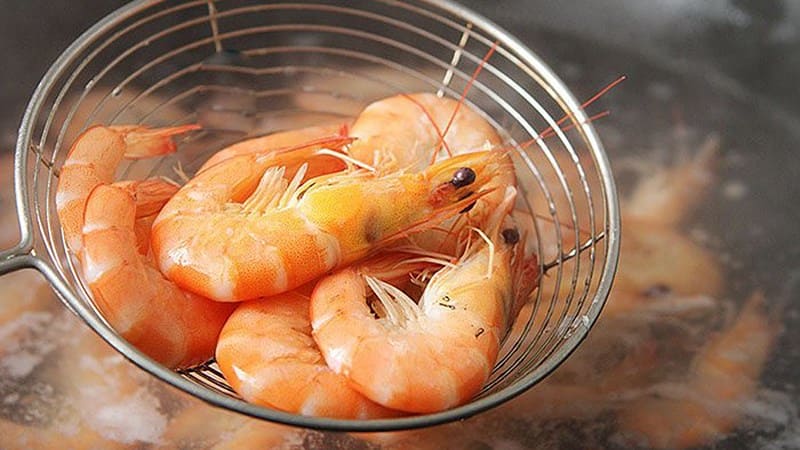
See continue: How To Reheat Seafood Boil For Perfect Leftovers Every Time?
Stovetop
Reheating shrimp on the stovetop is a great option for retaining its texture and flavor. Place the shrimp in a saucepan or skillet with a small amount of oil or butter, and cook over medium heat, stirring occasionally, until heated through. The downside of stovetop reheating is that it can take longer than other methods.
Oven
Reheating shrimp in the oven is a great option for maintaining its texture and flavor. Preheat the oven to 350°F (177°C), place the shrimp in a baking dish, cover with foil, and bake for 10-15 minutes or until heated through. The downside of oven reheating is that it can take longer than other methods.
Steamer
Steaming is a gentle and effective way to reheat shrimp without overcooking it. Place the shrimp in a steamer basket or on a heatproof plate above a pot of boiling water, cover with a lid, and steam for 2-3 minutes or until heated through.
Sautéing
Sautéing is a quick and easy way to reheat shrimp. Heat a small amount of oil or butter in a skillet over medium-high heat, add the shrimp, and cook for 2-3 minutes or until heated through, stirring occasionally.
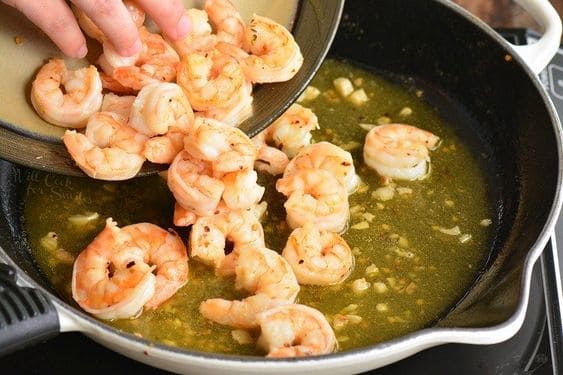
Bake
Baking is a great option for reheating shrimp dishes like casseroles or pasta dishes. Preheat the oven to 350°F (177°C), place the shrimp dish in a baking dish, cover with foil, and bake for 15-20 minutes or until heated through.
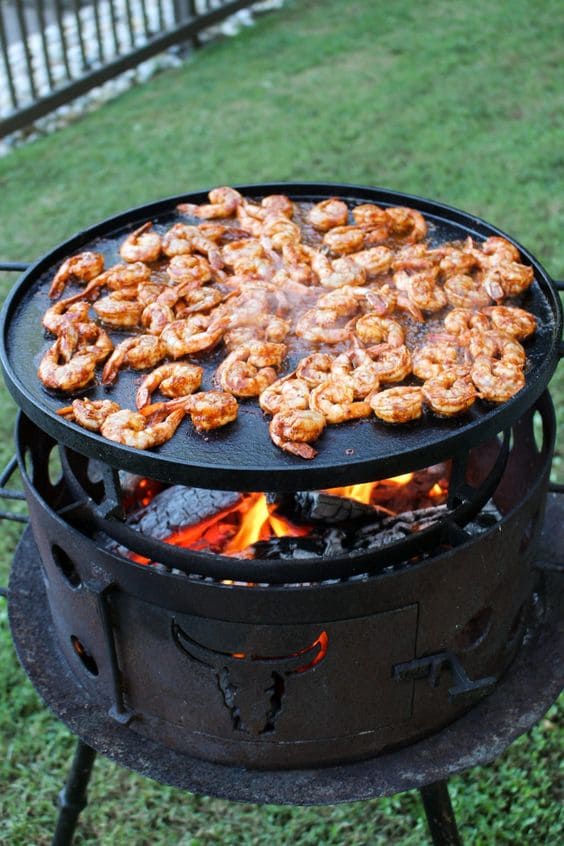
Microwave
How to reheat shrimp in the microwave? The microwave is a quick and convenient way to reheat shrimp. Place the shrimp in a microwave-safe dish, cover with a damp paper towel. So, how long to reheat shrimp in microwave? Reheat on high for 30-second intervals until heated through. Be sure to stir the shrimp and check the temperature frequently to avoid overcooking.
See also: How To Reheat Pulled Pork: A Comprehensive Guide To Delicious Leftovers
Grill
Grilling is a great option for reheating grilled or skewered shrimp. Heat the grill to medium-high heat, place the shrimp on the grill, and cook for 2-3 minutes on each side or until heated through.
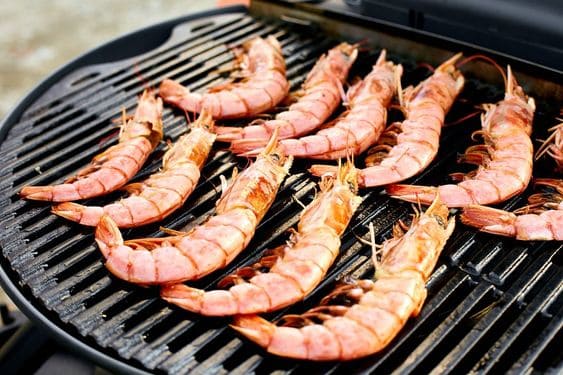
Air fryer
Air fryers are becoming increasingly popular for reheating food, including shrimp. To reheat shrimp in an air fryer, preheat the air fryer to 350°F (177°C) and place the shrimp in the air fryer basket. Cook for 5-7 minutes, or until heated through, shaking the basket occasionally to ensure even heating. The air fryer can help to maintain the shrimp’s texture and flavor, while also reducing the amount of oil needed for cooking.
No matter which method you choose, it is important to monitor the temperature carefully and avoid overcooking the shrimp to maintain its texture and flavor.
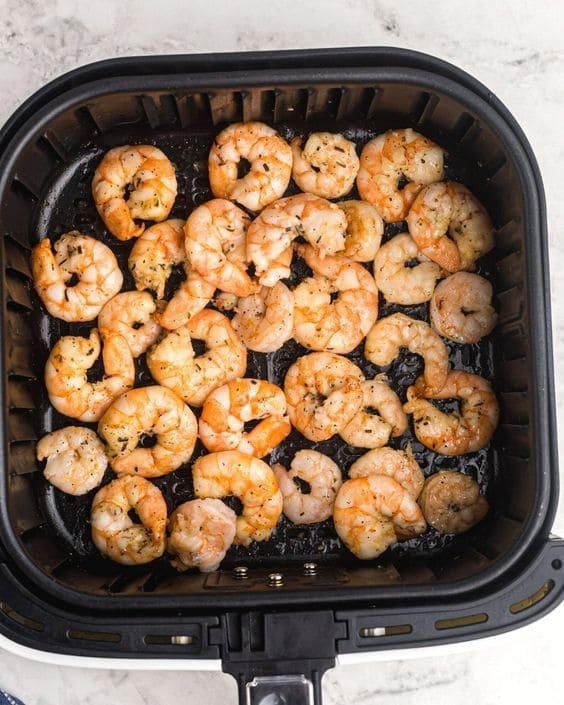
Techniques to Reheat Specific Shrimp Dishes
When it comes to reheating specific shrimp dishes, there are a few techniques you can use to ensure that the shrimp is heated through without compromising its texture and flavor. Here are some tips for reheating popular shrimp dishes:
- Fried shrimp: How to reheat fried shrimp in air fryer? To reheat fried shrimp, one of the best methods is to use an air fryer. Preheat the air fryer to 350°F (177°C), place the shrimp in the basket, and cook for 3-4 minutes or until heated through and crispy.
- Grilled shrimp: Grilled shrimp can be reheated in a skillet or on the stovetop. Place the shrimp in a skillet with a little bit of oil or butter and cook over medium heat for 2-3 minutes until heated through and lightly browned.
- Shrimp scampi: How to reheat shrimp scampi? Shrimp scampi can be reheated on the stovetop or in the oven. To reheat in the oven, preheat the oven to 350°F (177°C), place the shrimp scampi in a baking dish or on a baking sheet, cover it with foil, and bake for 10-15 minutes or until heated through.
- Cooked shrimp: How to heat up cooked shrimp on stove? Cooked shrimp can be reheated on the stovetop. Place the shrimp in a saucepan with a little bit of water or broth and cook over low heat until heated through, stirring occasionally.
- Frozen shrimp: How to reheat frozen shrimp? Frozen shrimp should be thawed before reheating. The best way to thaw frozen shrimp is to transfer it from the freezer to the refrigerator and allow it to thaw slowly overnight. Once thawed, the shrimp can be reheated using any of the techniques listed above.
- Shrimp Alfredo: Shrimp Alfredo can be reheated in a saucepan over low heat. Add a little bit of milk or cream to thin out the sauce and cook until heated through, stirring occasionally.
- Coconut shrimp: Coconut shrimp can be reheated in the oven to help maintain its crispy texture. Preheat the oven to 375°F (190°C), place the coconut shrimp in a baking dish or on a baking sheet, and bake for 5-7 minutes until heated through and crispy.
- Shrimp cocktail: Shrimp cocktail can be reheated by placing the shrimp in a pot of boiling water for 1-2 minutes until heated through.
- Shrimp gumbo: To reheat shrimp gumbo, place it in a saucepan or pot and cook over low heat until heated through, stirring occasionally. Add a little bit of water or broth if necessary to thin out the soup.
Tips and Tricks for Reheating Shrimp
Here are some tips and tricks for reheating shrimp that can help you to enhance its flavor, texture, and overall quality:
- Adding flavor to reheated shrimp: To add flavor to reheated shrimp, consider using marinades or sauces. This can help to enhance the flavor and prevent dryness. Some popular options include garlic butter, lemon herb, or spicy chili sauce.
- Preventing overcooking: Overcooked shrimp can become tough and rubbery, so it’s important to monitor the cooking time carefully. Use a food thermometer to check the temperature frequently and remove the shrimp from the heat as soon as it reaches an internal temperature of 165°F (74°C).
- Preventing dryness: To prevent dryness, consider reheating the shrimp in a moist environment. You can do this by adding a small amount of water, broth, or sauce to the reheating dish to help keep the shrimp moist.
- Enhancing the texture of reheated shrimp: To enhance the texture of reheated shrimp, consider using a gentle reheating method, such as steaming or sautéing. This can help to maintain the shrimp’s tenderness and prevent it from becoming tough and rubbery.
- Using proper storage methods: Proper storage of cooked shrimp is essential to maintain its quality and ensure that it is safe to eat.
By following these tips and tricks, you can reheat shrimp in a way that enhances its flavor, texture, and overall quality.
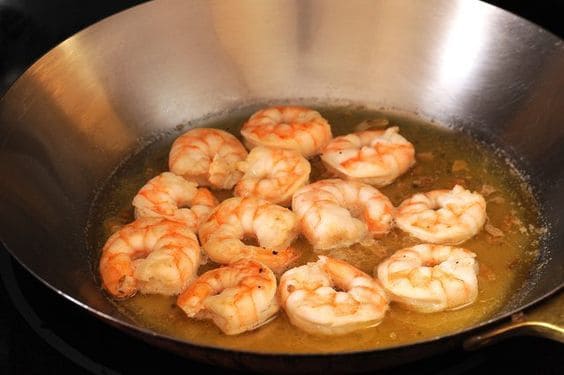
How to Store Leftover Shrimp
Proper storage of leftover shrimp is essential to maintain its quality and ensure that it is safe to eat. Here are some tips for storing leftover shrimp:
- Refrigerate promptly: After cooking, allow the shrimp to cool to room temperature before storing it in the refrigerator. Be sure to refrigerate the shrimp promptly, within 2 hours of cooking, to prevent bacterial growth.
- Store in an airtight container: Transfer the shrimp to an airtight container, such as a plastic or glass container with a tight-fitting lid. This will help to keep the shrimp fresh and prevent it from picking up odors or flavors from other foods in the refrigerator.
- Label and date the container: Label the container with the date that the shrimp was cooked and stored, so you can keep track of how long it has been stored in the refrigerator.
- Consume within 2 days: Cooked shrimp should be consumed within 2 days of being cooked and stored in the refrigerator. Avoid storing leftover shrimp for longer than 2 days, as this can increase the risk of bacterial growth and spoilage.
- Freeze for longer storage: If you have leftover shrimp that you don’t plan to eat within 2 days, you can freeze it for longer storage. Place the shrimp in a freezer-safe container or bag, label it with the date, and store it in the freezer for up to 6 months.
By following these tips, you can store leftover shrimp in a way that maintains its quality and ensures that it is safe to eat when reheated.
Creative Ways to Use Reheated Shrimp
Here are some creative ways to use reheated shrimp in delicious and flavorful dishes:
- Reusing leftovers: Don’t let your leftover reheated shrimp go to waste! You can use it to make a variety of dishes, such as fried rice, stir-fry, tacos, or wraps.
- Shrimp salads: Shrimp can be a great addition to salads, adding flavor and protein. Try tossing reheated shrimp with mixed greens, tomatoes, cucumbers, avocado, and a zesty vinaigrette for a refreshing and healthy salad.
- Shrimp pasta dishes: Reheated shrimp can be a delicious addition to pasta dishes. Try tossing it with spaghetti, garlic, olive oil, and Parmesan cheese for a simple and flavorful dish, or use it to make a creamy shrimp Alfredo or spicy shrimp scampi.
- Shrimp sandwiches: Shrimp can be a great filling for sandwiches, adding flavor and texture. Try making a shrimp salad sandwich with mayonnaise, celery, onion, and lettuce, or a shrimp po’boy with fried shrimp, lettuce, tomato, and a tangy remoulade sauce.
- Shrimp tacos: Reheated shrimp can be a great filling for tacos, adding protein and flavor. Try making shrimp tacos with fresh salsa, guacamole, and lime crema for a delicious and easy meal.
Must read: A Comprehensive Guide On How To Reheat Crawfish Like A Pro
Serving Reheated Shrimp
Here are some tips for serving reheated shrimp to ensure that it is delicious, attractive, and properly portioned:
- Pairing shrimp with appropriate side dishes: Shrimp pairs well with a variety of side dishes, such as rice, quinoa, roasted vegetables, or a salad. Consider pairing your reheated shrimp with a side dish that complements its flavor and texture.
- Presentation tips: To make your reheated shrimp look attractive and appetizing, consider serving it on a bed of greens or rice, garnished with fresh herbs or sliced lemon. You can also add a drizzle of sauce or dressing to enhance the flavor and presentation.
- Proper serving sizes: The recommended serving size for cooked shrimp is about 3-4 ounces per person, which is roughly the size of a deck of cards. To ensure that your guests are properly portioned, use a food scale or measuring cup to measure out the appropriate serving size.
- Serving temperature: Shrimp is best served warm or at room temperature. Make sure to reheat your shrimp thoroughly before serving, and keep it covered or under a heat lamp to maintain its temperature.
FAQs
Can you reheat shrimp more than once?
It is not recommended to reheat cooked shrimp more than once, as this can increase the risk of bacterial growth and spoilage.
How do I know if my reheated shrimp is safe to eat?
To ensure that your reheated shrimp is safe to eat, use a food thermometer to check the internal temperature. The shrimp should reach a minimum internal temperature of 165°F (74°C) to kill any bacteria that may be present. Additionally, be sure to store and reheat the shrimp properly to reduce the risk of spoilage and bacterial growth.
Can you reheat shrimp in a slow cooker?
While it is technically possible to reheat shrimp in a slow cooker, it is not recommended. Slow cookers can take a long time to heat up and may not heat the shrimp to a safe temperature quickly enough to kill any bacteria that may be present. It is recommended to use one of the other reheating methods, such as stovetop, oven, or microwave, to ensure that the shrimp is reheated safely and properly.
Conclusion
As a result, knowing how to reheat shrimp properly can help you to enjoy this delicious seafood without compromising its flavor or quality. By following the proper reheating methods and techniques, you can reheat shrimp in a way that is safe, tasty, and visually appealing. Whether you prefer to boil, sauté, bake, or microwave your shrimp, the key is to monitor the temperature carefully and avoid overcooking or drying out the shrimp. With these tips and tricks, you can enjoy reheated shrimp in a variety of dishes, from salads to pasta to tacos, and impress your guests with your culinary skills. So go ahead and give it a try – you’ll be surprised at how easy and delicious reheated shrimp can be!

